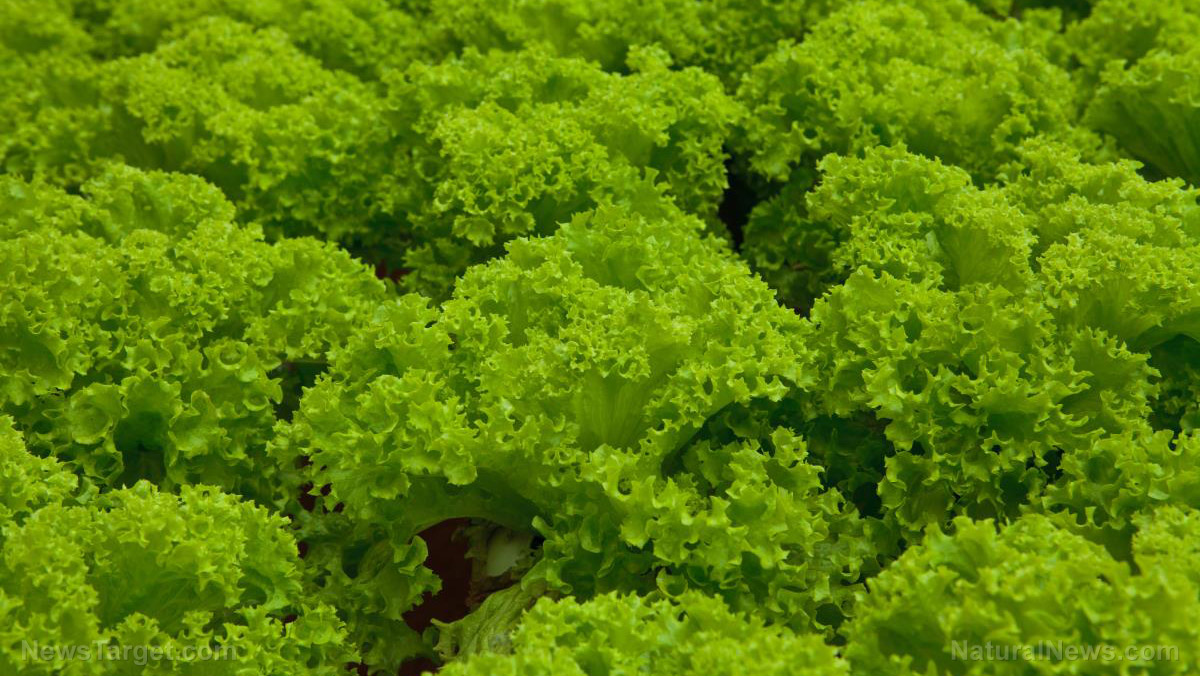
Advertisement
Salad bowls just aren’t complete without fresh lettuce leaves. Brimming with vitamins, minerals and powerful antioxidants, lettuce is a must-have in vegetable gardens.
Luckily for you, growing your own lettuce is a fairly simple process, whether you intend to grow it outdoors in an expansive garden or indoors in containers by the kitchen windowsill.
The health benefits of lettuce
So what keeps gardeners going back for more lettuce year in and year out? Let’s take a closer look at the most touted health benefits of this classic salad green:
- Provides nutrients – Lettuce contains several health-promoting vitamins and minerals, such as iron, zinc, magnesium, potassium, phosphorus, copper, manganese, selenium, vitamin C and B vitamins.
- Boosts digestion – The fiber in lettuce helps keep food moving along the digestive tract, which helps prevent constipation and bloating.
- Lowers cholesterol – The fiber in lettuce also prevents the gut from absorbing too much cholesterol, which can raise the risk of heart disease, stroke and heart attack.
- Supports weight loss – Each cup of shredded lettuce can have as little as 12 calories. It also contains zero cholesterol and very little fat. Even so, lettuce’s high fiber content can make you feel full for longer periods, effectively discouraging you from snacking or overeating.
- Supports heart health – Powerful antioxidants in lettuce, such as vitamin C and beta-carotene, help prevent the oxidation of cholesterol, a process that causes cholesterol to build up along the arteries.
- Helps induce sleep – Lettuce has sleep-inducing effects thanks to a substance known as lactucarium. This is a milky fluid secreted by several species of lettuce when the leaves are cut that has sedative effects.
- Eliminates toxins – Minerals in lettuce help rid your body of toxins that can cause the appearance of bad skin and negatively affect brain health, among other adverse health effects.
Tips for growing lettuce
Here’s a simple three-step guide to planting, growing and harvesting lettuce:
1. Choosing the right lettuce
Lettuce is a fast-growing cool-season crop. Most lettuce varieties must mature before the weather gets warm. However, there are also bolt-resistant and heat-tolerant lettuce varieties for growing in warm weather. Keep this in mind when choosing which lettuce to grow.
Here’s a rundown of the four main kinds of lettuce:
- Crisphead – Crisphead, also known as iceberg lettuce, is the most popular kind of lettuce in the U.S. It has a milder flavor than other lettuce varieties. This can take up to eight weeks to mature.
- Loose-leaf – Loose-leaf lettuce varieties do not form compact heads. Instead, these varieties produce tender leaves, which branch from a central stalk, eight weeks after germination.
- Romaine – Romaine lettuce is characterized by its long, crisp and slightly bitter leaves. This can take between eight to 12 weeks to mature.
- Butterhead – Boston and Bibb lettuce are butterhead varieties, which are so-named because of their soft, buttery leaves. The rounded leaves of these varieties make the perfect cups for cooked meat. Bibb and Boston lettuce can be harvested throughout their development.
2. Planting lettuce
Lettuce prefers rich, well-drained soil. You can start lettuce from seeds in containers if it’s still cold out. You can then transplant them outdoors once the roots have formed.
If planting lettuce outdoors, choose a spot that gets plenty of sunlight. Water your lettuce consistently. Keep the soil moist at all times so that the plant grows big leaves. But take care not to water too much too often as this can make the lettuce grow long roots but not big leaves.
3. Harvesting lettuce
Some lettuce varieties, like Bibb and Boston, can be harvested at any point in their development. Others, like red, green, oak and romaine lettuce, can still produce enough leaves for a second harvest if regularly watered after the first one. Just make sure to trim the outer leaves, leaving the center stalk intact.
Lettuce is one of the easiest vegetables to grow, whether indoors or outdoors, even for beginners. Just follow this guide to growing your own lettuce for an abundant harvest after each growing season.
Sources:
Advertisements







